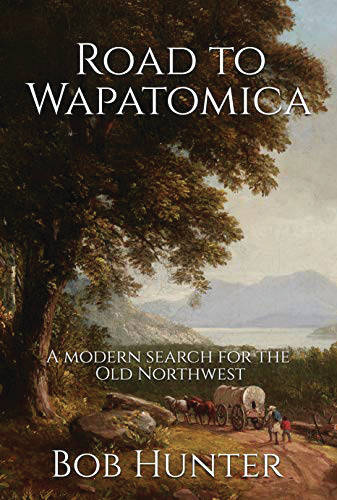

PIQUA — The history of a trading post and old settler village that sits in Piqua’s back yard is one of the focuses in a new book about the old northwest.
“I really enjoy doing this. I always enjoy visiting some of these places, so it just kind of grew into a book. It grew into a much bigger book than I originally planned because I started adding sites as I went along,” Bob Hunter, author of “Road to Wapatomica: A Modern Search for the Old Northwest,” said.
Hunter has always been interested in history, since he was younger and first read “The Frontiersmen” by Allan Eckert; he was fascinated by how Eckert would write about battles where settlers were killed and then have a footnote that told the reader that a gas station sat on the battle site all these years later. Hunter found it intriguing that he was finding out things that happened in places he never would have imagined them happening, and it was something that stuck in the back of his mind and was implemented when he wrote “A Historical Guidebook to Old Columbus” in 2012. “Road to Wapatomica” is no different; the chapter on Pickawillany, a Native American village and trading post that sat in the same area the Johnston Farm and Indian Agency is located today, opens with an anecdote about a conversation Hunter had with a local teenager, who mixed up Pickawillany with Piccadilly Circus.
“Pickawillany is one of those places where you’re looking out over the field, and you can’t really believe all this stuff happened there. But I’m always kind of fascinated by that. If you read the events and the things that happened, you just kind of look at what today would look like an empty field, there’s no reason to think that anything happened there,” Hunter said. “I was having fun when I was doing this. I love history, and when I would go and visit these sites, it was fun to go do that.”
Pickawillany, as the chapter states, was inhabited by Native Americans long before the trading post was established in 1748 by British settlers and served neighboring tribes. Most notably, Pickawillany was the site of a famous battle in 1752 where French settlers drove out English settlers and Miami tribe.
Today, the most notable signs of Pickawillany are a few historical markers, a Pickawillany carved rock declaring it the “first English settlement and the most important trading post in the West”, both of which sit on Johnston Farm and Indian Agency’s property. Hunter also talks about the Ohio History Connection’s purchase of 37 acres of land where excavation sites were lead from 2002 to 2013; according to the book, the concentration of artifacts, written descriptions and other evidence leads OHC archaeologist Bill Pickard to the conclusion that the trading post site was 350 yards northeast of the Johnston Farmhouse.
“The Pickwillany site is really interesting to me because during that time period, all of these important historical figures from that era, as far as soldiers and settlers and whatever, were there at some time or another during this relatively small period. All sorts of things happened at this spot, and it’s hard to imagine when you read these accounts and then you see a farm field. Pickard pointed out to me that the trading post was by the river, but the whole Pickawillany village was hundreds of people. When you stand where the signs are and look over at the farm fields — the whole settlement covered those farm fields,” Hunter said.
“Road to Wapatomica” covers other historical sites in the area, including Loramie Post, Fort Recovery and Fort Greenville. The book is available for pre-order on Amazon and Target, and will be released on June 1.



